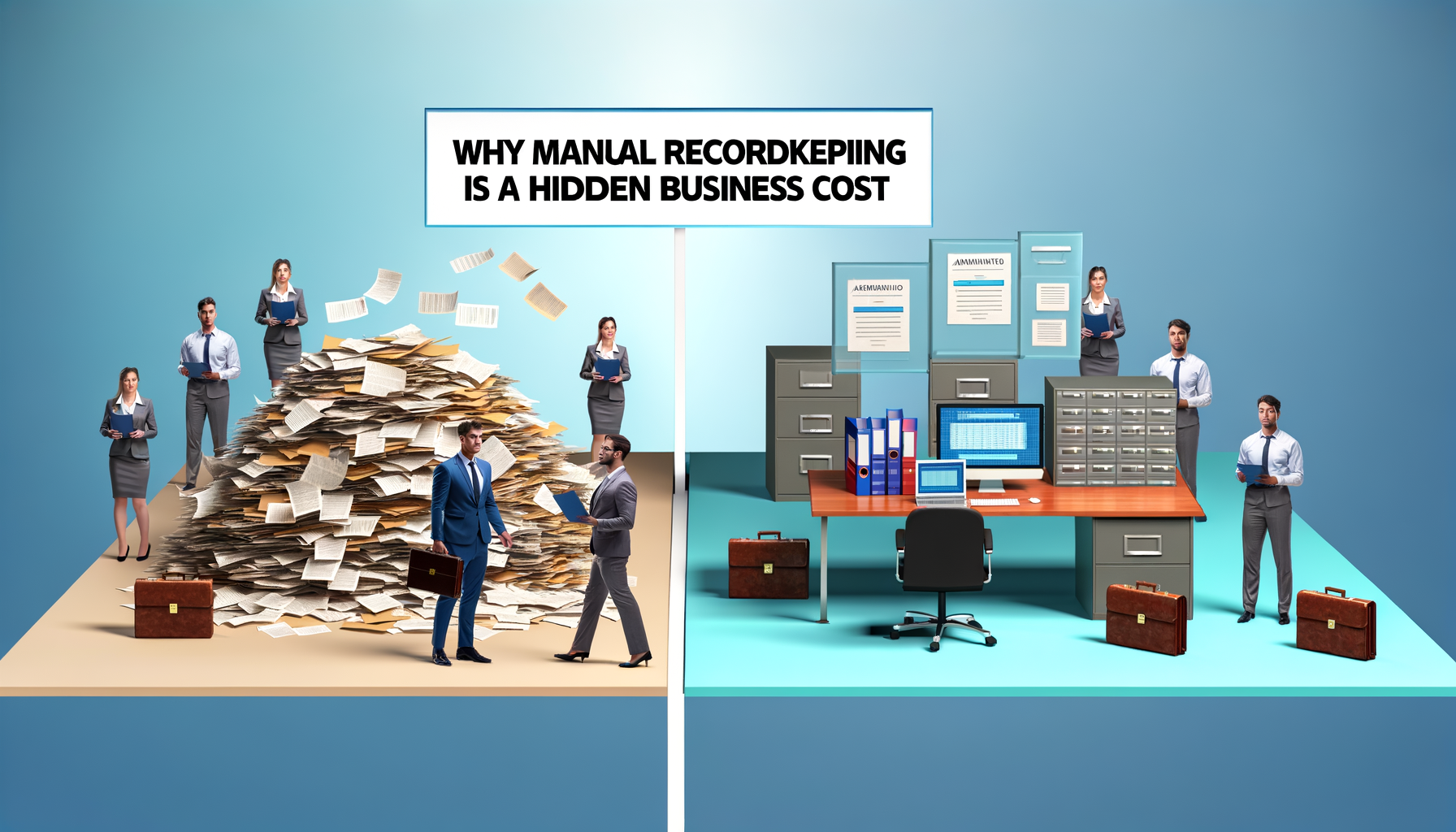
Why Manual Recordkeeping is a Hidden Business Cost
Understanding the True Cost of Manual Recordkeeping
Every entrepreneur or business leader knows the traditional sight of towering files stacking up in corners of the office, representing hours of manual labor dedicated to maintaining organized records. Recordkeeping is an essential part of running a successful business, especially one that aspires to scale. However, many underestimate the hidden costs that manual processes can accrue over time.
Today, I want to delve into these unseen costs and highlight the very real impact they can have on your business’s efficiency and bottom line. Let’s examine how transitioning from manual work to automation in recordkeeping can not only save costs but also elevate your business operations.
The True Cost of Manual Work in Recordkeeping
Imagine dedicating hours each week to manually updating Excel sheets, reviewing paper documents, and filing items physically. At first glance, the costs associated with this process may seem negligible—perhaps just the cost of paper, printing, or even ink. But, dig a bit deeper, and you discover that the cost of manual recordkeeping is substantially* more.
- Time Inefficiency: Time is money. Employees spending significant portions of their day on manual tasks rather than strategic objectives drain valuable resources that could be better used elsewhere.
- Human Error: No matter how cautious, manual data entry is prone to mistakes, leading to inaccuracies that can ripple throughout your business operations, ultimately impacting decision-making and financial accuracy.
- Storage and Maintenance Costs: Maintaining physical copies requires space and infrastructure. Over time, these costs can soar, especially as your business grows and records multiply.
Why Businesses Stick with Manual Processes
Despite the drawbacks, many businesses cling to manual processes, often due to fear of change, budget constraints, or misperceived complexity in adopting automation. In my own entrepreneurial journey, I’ve come across many who hesitate. However, those who adapt to smarter solutions often turn out ahead in the long run.
For instance, at Foundercrate, we had our fair share of manual processes, but recognizing their impact was crucial. An initial investment in automation tools quickly paid off in saved time and resources.
The Automation Advantage
Automation offers more than just the allure of being modern and efficient. Let’s discuss the concrete benefits:
- Cost Efficiency: Automating tasks means fewer man-hours spent on mundane tasks, leading to direct savings in labor costs. It also reduces errors that could have costly repercussions.
- Scale with Ease: As your business grows, so do your record-keeping needs. Automated systems can easily handle increased data loads, unlike manual methods which can quickly spiral out of control.
- Enhanced Data Security: Digital records benefit from robust security measures, ensuring that your sensitive data remains protected against loss or unauthorized access.
Therefore, shifting to automated systems doesn’t just keep business processes organized—it propels them forward, providing a solid platform for future growth.
Transitioning from Manual to Automation
Moving from manual recordkeeping to automated systems may initially seem daunting, but breaking it down into manageable steps can ease the process. Here’s a simplified transition plan:
- Audit Current Processes: Identify what’s working and what’s not in your current system. This real-world insight will serve as the foundation for your new system.
- Choose the Right Tools: Evaluate various service providers and opt for solutions that align with your business needs. Consider scalable SaaS providers known for cost-saving benefits.
- Invest in Training: Make sure your team is well-versed with the new systems, reducing resistance and fostering smooth integration.
- Monitor and Optimize: Constantly review the system’s performance to ensure it meets your desired outcomes and make necessary adjustments.
Transforming manual recordkeeping procedures is more than a modern convenience; it’s a strategic decision that can significantly impact your business’s efficiency and financial health. Recognizing manual recordkeeping as a hidden cost empowers you to take actionable steps towards improved profitability and growth.
I invite you to explore automation and SaaS solutions further, and connect with me for any insights you might need as you make that transition. Reach out, and let’s revolutionize your approach to recordkeeping together.
